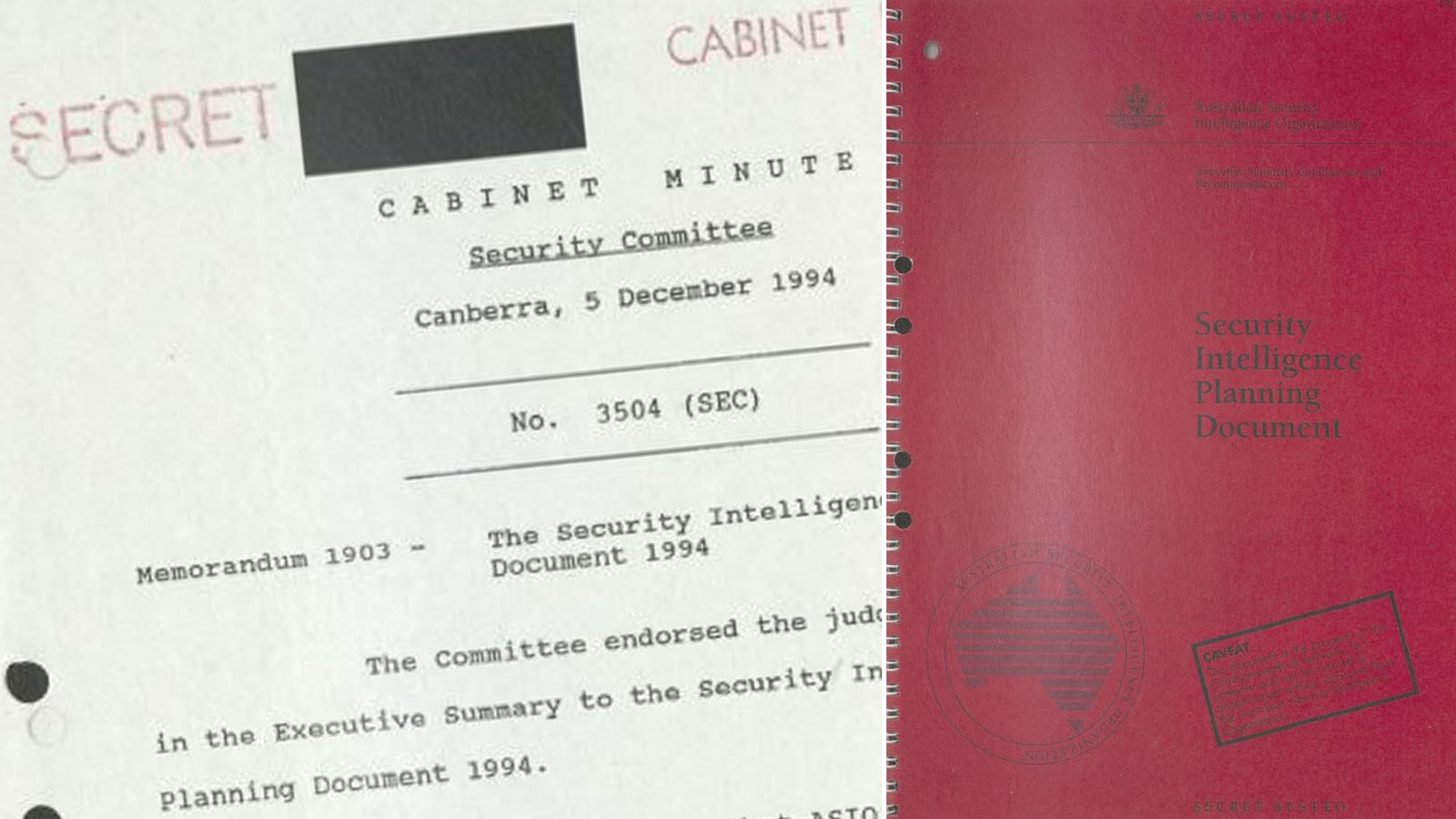Declassified spy manual shows threats to Australia

READ MORE
In the mid-1990s, Australia’s domestic spy agency gave a secret handbook to the Keating Government on the threats and challenges Australia would face in the coming decade.
The 34-page notebook, bound by red covers, was released by the National Archives of Australia on Monday, providing a fascinating insight into the often secret work of ASIO.
And while some threats outlined in the Security Intelligence Planning Document have since disappeared, others remain.

Islamic extremism and white nationalists
As the world moved out of the shadow of the Cold War, ASIO’s view of the world in 1994 shifted to Australia and its place in the region.
“Progress has been made towards Middle East peace and the rehabilitation of Eastern Europe, thus reducing the risk from these areas,” the document noted.
But, just like today, the intelligence agency was worried by radical Islamic and nationalist extremism:
“Islamic extremism, because of its transnational and often anti-Western nature, poses a risk to international security.”

The risk of a homegrown Islamic terrorist was considered minimal. ASIO said the “wild card of Islamic extremism perpetrated by small, diverse groups not previously associated with international terrorism distant from the Middle East” would need to be monitored.
The spy manual also said racist, religious and political extremism, perpetrated by “the racist ‘right’ and post-Cold War ‘left’” was a concern.
The document Australian groups like the International Socialist Organisation (founded in 1971 as the Marxist Workers’ Group) and nationalist party National Action as potential threats.
“The National Action (NA) group is active in Adelaide, with a high intent and capability to undertake acts of violence,” it said.
“Continual monitoring of such groups will be required.”
One Nation would be founded three years later by Pauline Hanson.
Weapons of mass destruction
And 22 years since the document was given to Cabinet, the threat of foreign interference hasn’t abated.
In heavily redacted sections of the briefing, the agency said “foreign intelligence services attempting to covertly protected information and influence Australia’s decision-making” were worrying.

Foreign spies trying to “influence ethnic communities originating from their country” would also be a priority area for ASIO.
The threat of weapons of mass destruction (WMDs) was also hanging heavy over the world, and ASIO warned Australia’s technological prowess could make it a target for countries intent on developing them.
“Proliferators are likely to continue to see Australia as a potential source of information and material relevant to the development of their WMD program,” the report noted.
‘Well educated’ spies wanted
In 1994 and 1995, the internet was becoming more widespread and Australia was on the cusp of rapid technological change. Recognising this, ASIO told the government it needed smart spies who were able to handle complex investigations.
It told Cabinet it needed spies who were:
- “Competent analysts able to use modern technology,
- Competent human intelligence collectors with ethnic community language skills, and
- Technical experts proficient in using and developing contemporary technologies.”
It said they’d need to be adept at “new technologies” like CD-ROMS, compact discs, facsimiles and computers.
Where to get intelligence
To protect Australia’s interests, ASIO said it needed to exploit multiple types of information:
“There is much room for exploitation of overt information” like the media, it said.
“Computer networks such as Internet also provide potential access to an enormous range of data.”

But it noted covert ways of gathering information was needed to combat the “secretive and conspiratorial” security risks in Australia.
“Covert sources require time to develop and cannot be simply turned on when required,” it noted.
“Less expensive sources are exploited before the more expensive and less intrusive sources are exploited first.”
Article source: http://feedproxy.google.com/~r/sbsnews-topstories/~3/0eBITcwhCYg/russia-grapples-history-centenary-revolution-approaches
Comments
Post a Comment